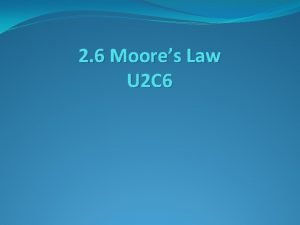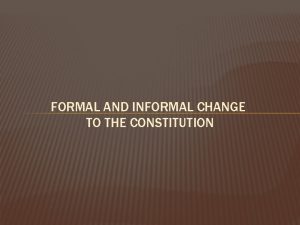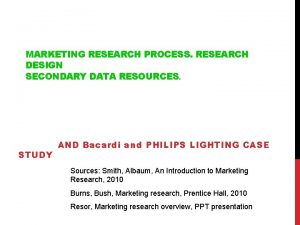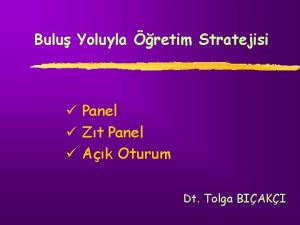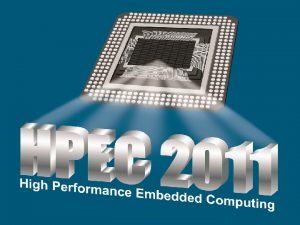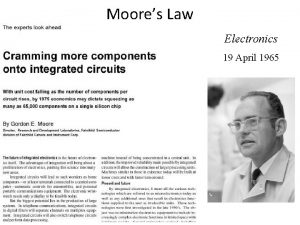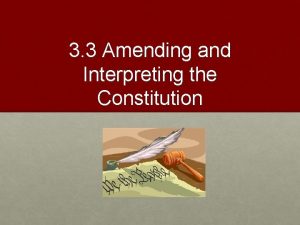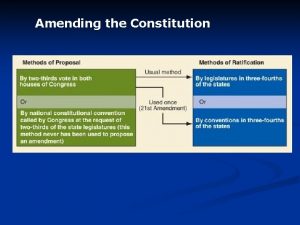HPEC 2004 Panel Session Amending Moores Law for









- Slides: 9

HPEC 2004 Panel Session: Amending Moore’s Law for Embedded Applications The Second Path: The Role of Algorithms in Maintaining Progress in DSP Mark A. Richards Georgia Institute of Technology 1 HPEC 04 Panel Session

Digital Signal Processing is … • “… That discipline which has allowed us to replace a circuit previously composed of a capacitor and a resistor with two anti-aliasing filters, an A-to-D and a D-to-A converter, and a general purpose computer (or array processor) so long as the signal we are interested in does not vary too quickly. ” – Prof. Tom Barnwell, Georgia Tech 2 HPEC 04 Panel Session

Reliance on Moore’s Law • Doing our signal processing digitally has allowed us to grow our capability with Moore’s Law … 2 x every ~1. 9 years 2 x every year Source: Intel • … but puts our rate of growth at risk if it begins to falter 3 HPEC 04 Panel Session

Elements Contributing to Embedded Processor Performance Signal Processor Hardware IC Devices Software Computer Architecture Algorithms Functionality The software side of DSP provides another path to exponential growth in capability 4 HPEC 04 Panel Session

Required for Equal Computational speedup Years of Hardware Improvement Moore’s-Law Equivalent Years Required to Match FFT Computational Speedup Radix-2 FFT Length 5 HPEC 04 Panel Session

Different Character of Hardware (IC) vs. Algorithm Improvements Improvement Metrics Hardware Algorithms Regularity Predictable Unpredictable Dependent variable Time Order complexity Impact on applications Incremental Leap-ahead Useful lifetime 3 years or less 10 years or more R&D Cost growth 2 x in 3 years 1. 11 x in 3 years 6 HPEC 04 Panel Session

Types of Algorithm Contributions • Improved efficiency of existing functionality – Quicksort, FFT: N 2 Nlog. N – Fast multipole algorithm: N 2 N • Architecture-aware implementations Signal. Processor – FFTW: discrete Fourier transforms – ATLAS: linear algebra IC Devices – SPIRAL: DSP algorithms • Entirely new Functionality Hardware Computer Architecture Software Algorithms Functionality – Creates capability not achievable with any amount of hardware speedup – Example: voice recognition using parametric modeling and HMMs instead of vocoders and 1960 s pattern recognition – Wavelets, quantum signal processing, nonlinear techniques, knowledge-based and cognitive techniques, etc. 7 HPEC 04 Panel Session

Wafer-Fab Capitalization Cost Compared to Annual DSP Algorithm R&D Costs 100 10 $B Capital cost for state-of-the-art wafer fab facility Annual R&D support for entire IEEE DSP Society membership (18, 500 x $150 K in 2001) 1. 11 x every 3 years† 1 2 x every 3 years 0. 1 0. 01 1970 † 1980 1990 Year 2000 2010 Salary inflation rate based on US Bureau of Labor and Statistics Median Engineering Salaries 1983 -2003 8 HPEC 04 Panel Session 2020

Algorithms Provide … • The other half of implementation speedup • Entirely new functionality • Non-exponential cost growth • A way forward if hardware speedups slow! 9 HPEC 04 Panel Session
